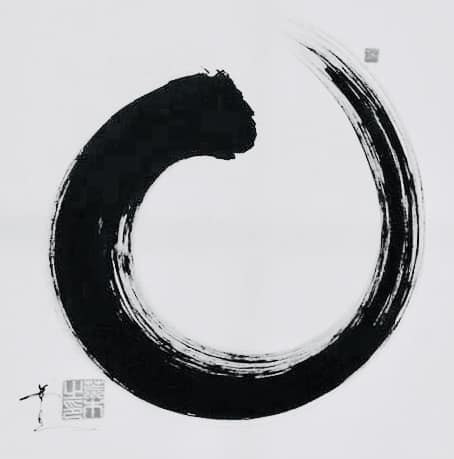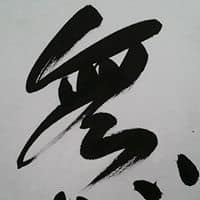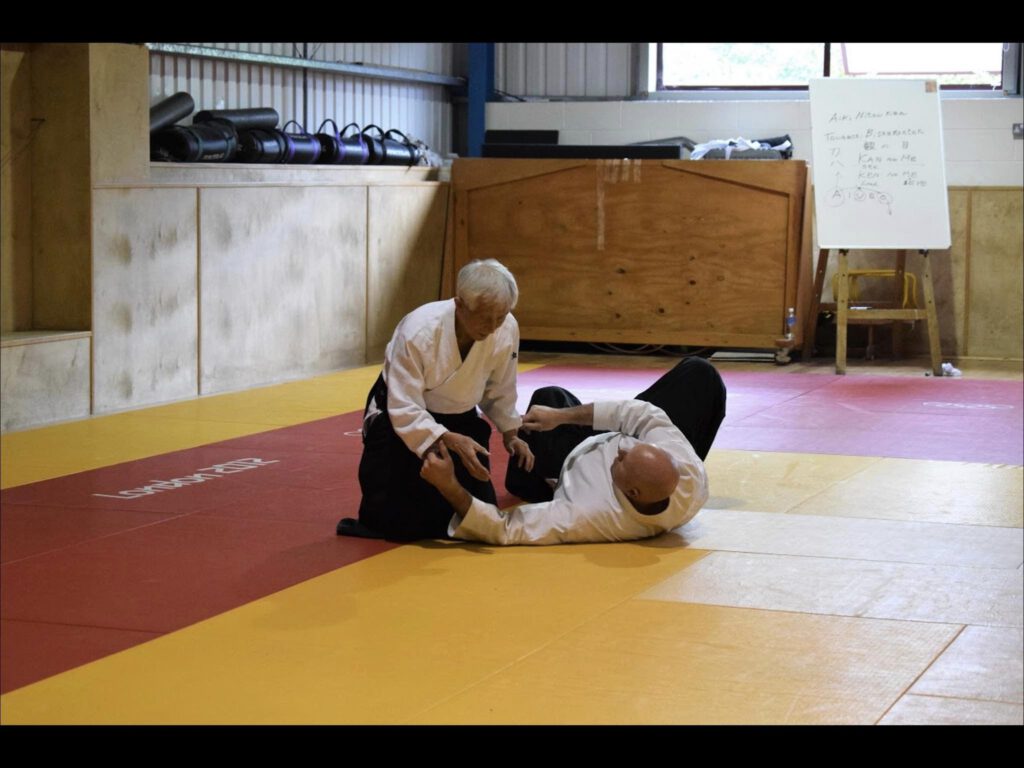


The only way to become what you need to be is to let go of what you think you are.
I teach Aikido. It is what I do, not what I am.
It’s not an identity to which I can find safe Harbour.
I thought for a long time there that I was studying self defence, until I was asked the question, “which self are you trying to defend?” – valid, and difficult point, I thought.
Identifying with a particular way of being( for example, a student of Aikido, or a particular style of Aikido), you automatically sacrifice your ability to be anything other than the definition that you place on yourself.
The moment I have intent I create conflict between the way the world is and the way I want it to be, attempting to control the way that I fear it could end up, I focus all my energy into trying to manipulate an outcome to feed a notion that I am able to control my perception of reality based on the identity I hold so close to my heart.
It is difficult to see past the delusions of how we wish to be identified, to look for the truth that is at the heart of martial arts study – that conflict only exists in the mind.
Chushin Kitsu is a term all students of martial arts should come to identify with. It means to unit the centre or mind to one, to act without intent or to return the consciousness to the self.
I have been banging on for years now that we are not doing anything to others, but rather just moving ourselves, and that to have the intent to do anything to another is aiuchi mutual death. Both people having conscious intent creates conflict, to avoid this conflict, the intent returns to the self.
Kata is the vehicle that was supposed to free us of the identity that we used to imagine or perceive as our nature. It became, due to attachment, a vehicle to enslave our consciousness and uplift our ego self.
The founder said, “I am the universe.” Do we perceive the universe as having some set form, a set way that it functions under?
Releasing the mind creates flexibility to constantly redefine your space, not fast or slow, or close or far, but rather a state of being, awareness of the true state of a universe that is in a constant state of change.
From moment to moment the universe that was and the universe that is are different.
The immovable mind is one that is not disturbed by external stimulation, shapes, distance speed, strength, all are just constructs that stream from how we identify ourselves, and therefore how we identify others, and also how we identify with all the tangible world of existence.
Tesshu said, “When I thought of my ability to see the technical level of my opponent before the engagement, I realised that it had absolutely nothing to do with the opponents skillfulness or unskillfulness, and that it was I which was creating “skillfulness” and “unskillfulness” in the opponent. If there is “I” then there is “opponent”, and if there is no “I” then there is no “opponent”.
If one truly comprehends this principle, there will not even be the slightest discrimination between “skilful” and “unskilful”, “strong” and “weak”, “big” and “small”…..
It’s exactly the misunderstanding of the rational of his thinking that means, as martial artists we never fulfil our true potential as human beings. Many great masters of the past, after arduous training came to similar realisations.
That the essence if the study of martial arts is not about fighting, or conflict, but understanding that these things arise due to a state of consciousness that they were training to transcend.
In our modern world, it’s not an easy state to reach for. Many western academics far more intelligent than I am would argue that it doesn’t exist, and that some great physical skill that can help you to overcome most attackers is all you need to be a great martial artist, but I would argue that once again this reasoning just creates an identity that needs to be protected.
I am asking those that study the heart of budo to see that it’s exactly this type of thinking that these great masters devoted a lifetime to overcoming. Aiki has nothing to do with a physical skill, it has to do with exactly the opposite.
Omori Roshi said of Sekiun Harigaya:
“Harigaya Sekiun created the term Ai-nuke to describe his condition attained through sword. It is the world of ABSOLUTE PEACE THAT TRANSCENDS WINNING AND LOSING.(sound familiar again……). It is a different dimension from aiuchi.
WE SHOULD CONSIDER IT A CRUCIAL TREASURE LEFT BY A MAN OF ANCIENT TIMES………………….you must transcend dualism and enter into the realm of Ai-nuke.
But there is a problem.
It is no good just to INTELLECTUALISE the concept of Ai-nuke.
This is a very important point.
If you do not have the background and strength of aiuchi, you cannot enter the realm of Ai-nuke…………if you have not mastered aiuchi, it is impossible to learn Ai-nuke”
Have we become so self absorbed in this modern world to deny that true budo meant more than a trick to beat an opponent, or a way of internal body ability that was invincible to attack?
Many great masters realised that, beyond the arduous training and skill they acquired, there was something far more precious that can be obtained from the study of budo.
Tsuki hara Bokuden – ichi no tachi (one cut)
Kamiizumi nobutsuna – fumetsu- no kokoro (eternal mind)
Miyamoto Musashi – Iwao no mi ( body of stone(immovability)
Harigaya Sekuin – mujushin (non abiding mind)
Kamiya Denshinsai – jikishin (upright heart )
Yamaoka Tesshu – semui (giver of fearlessness)
All these masters left teachings that show a transcendental state of mind, not just the ability to defeat an opponent, but the ability to defeat an identity, that of the self they fought so vigorously to defend before their moment of clarity.
Why can’t the founders message be exactly this same message. And if he hadn’t reached it, at least he admitted he was searching for it ;
“In Aikido, before one’s opponent comes, one absorbs the intentions of his spirit/mind into oneself to control it freely. That is to say, the workings of a spiritual gravity(inryoku no tanren) makes progress. One sees the world all at once. Today, as yet, almost nobody is able to do this. I haven’t reached it, either.”
O Sensei in Aikido News issue 4
Is it so hard to believe that a man devoted to training and understanding the transformative power of Budo turned his back on the power that he had created through technique within his body to focus on a more important message to leave behind to those that chose to follow his path?
“When a person suddenly faces his enemy in an mental state free from all ideas and thoughts and is instantly able to deal with him, we call that aiki. In the old days it was called ‘aiki no jutsu’.”
O’Sensei
There are many ways to the top of a mountain, most are happy to sit at a vantage point and watch the world, their world, pass by. I am not. I want to know what is at the top of the mountain, where the noise of the world is drowned out by the silence of nothingness.
It is at this time that we can look back at our training and start to contemplate:
“If all things truly return to the one, then to where does the one return?”
This is the heart of the message of the truth of budo.
Peter Kelly
